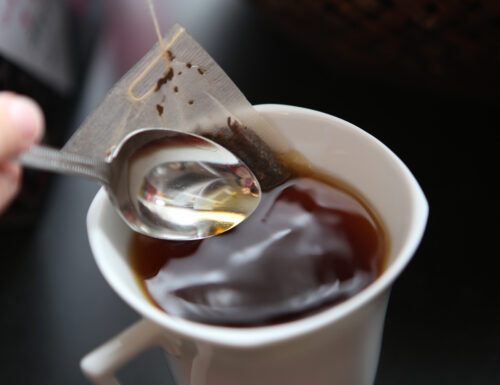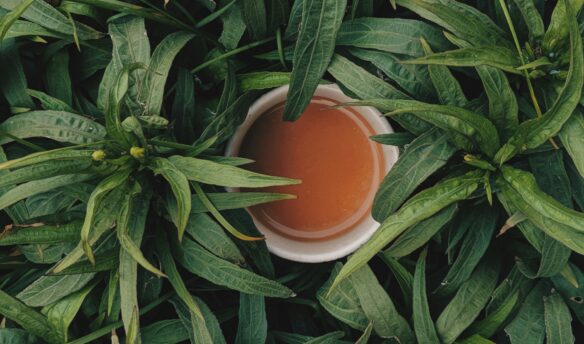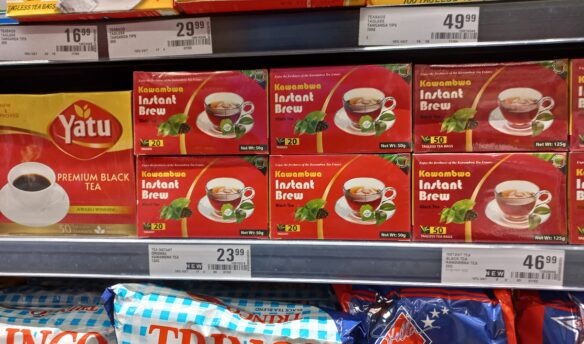[I]t is a funny thing selling tea to the Brits. It sounds like a walk in the park. After all we drink 165 million cups of the stuff every day in the UK, far more than we do coffee. Customers frequently recount proudly how they had “tea in their bottles as a baby.” So offering them a better brew should be a breeze. But this tea habit, part of our national genome, is the biggest challenge facing specialty tea sellers. Let me explain.
Almost needless to say, coffee has evolved hugely in the past few decades. In a pre-Starbucks era, coffee for those Brits who drank it was instant and that was that. It was also just a drink, not something bound up in our identity. Its lack of standing gave it space to change. Now, with specialty coffee exploding in London, head to the right place and you can choose everything from the origin of the beans, the intensity of the roast, the amount of milk, and of course the all-important brew method.
Meanwhile, tea has been plodding along in the background. We are starting to see some change on the supermarket shelves, with both an increasing number of boutique tea brands and bigger players starting to take note. Indeed last week I saw a big brand had used the word “estate” on one of its packs—progress given that until now there had been a complete absence of any reference to the provenance of the leaves in this space.
And this too means the small beginnings of a more discerning customer. But for the most part, tea in the UK is still firmly wedged in that instant coffee, cup-of-joe era. And we don’t seem in too much of a hurry to move on. We love our good old English cuppa: a low-grade bag, squeezed against the side of a mug to achieve maximum color and strength, topped off with milk and often sugar. Don’t get me wrong; I too knew tea as this for much of my life and there is certainly still a time and a place for it. But it is also time for change.
The tea itself can be anything from a rich, malty Assam to kick start the day (perfectly happy with milk, I might add), to a delicate Darjeeling in the afternoon, to an exquisite silver needle white tea after dinner. In my work, I delight at the variety, but I also understand that it can be exciting and intimidating in equal measure. On the one hand, there is something for everyone, a tea for every mood or time of day, a world of flavor and subtlety to explore. On the other, if that discovery is unaided, forced, or worse, simply badly done, it can leave a customer frantically searching for her more familiar bag and denouncing the rest as “freaky tea.”
We need to re-sell tea to the Brits. Not bags. Not cuppas. Not ‘builders.’ But real tea in a new and wonderful guise.
So while we are indeed a nation of tea drinkers, the concept of good tea, loose tea, tea with flavor profiles, and tea without milk is still in many ways a new product. In fact I often wonder if it would help to have a different name altogether for the drink to help us shed these deeply rooted habits and expectations. It is no coincidence that in the US, in Canada, and even in coffee-loving Paris, the tea market is so much more advanced and it is simply because they don’t have the same traditions to fight against. Without that heritage, they can approach tea much more creatively, while for us it limits innovation. All this means that we need to re-sell tea to the Brits. Not bags. Not cuppas. Not ‘builders.’ But real tea in a new and wonderful guise.
This gives you some insight into the task my team and I face each day from behind the counter. At Good & Proper we celebrate small victories, like a customer asking for a “breakfast tea” (a generic description for ”black tea I can put milk in”—also often referred to as “normal tea” or “bog-standard tea”) and leaving delighted with an Assam they didn’t expect to love. These interactions are the small beginnings of something much bigger. I am convinced that the UK tea drinker just needs time and am thrilled to be a part of what is going to be a very exciting road ahead. Just as the craft beer movement was slower to take hold in the UK than elsewhere due to our strong beer traditions, for tea too the UK might be the hardest nut to crack. But when it does, there’ll be no stopping it and I can’t wait.
—Emilie Holmes owns Good & Proper Tea in London.
















